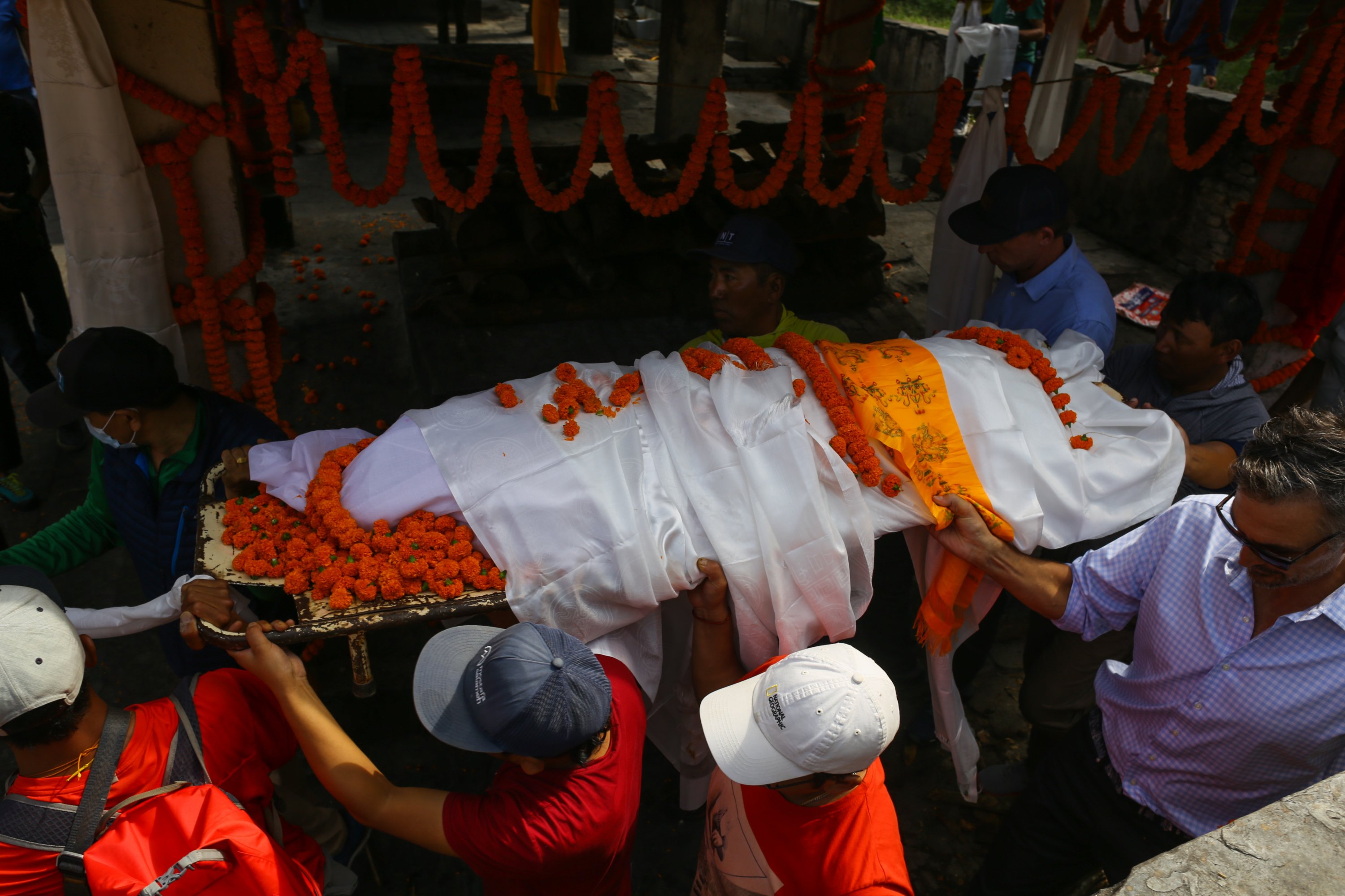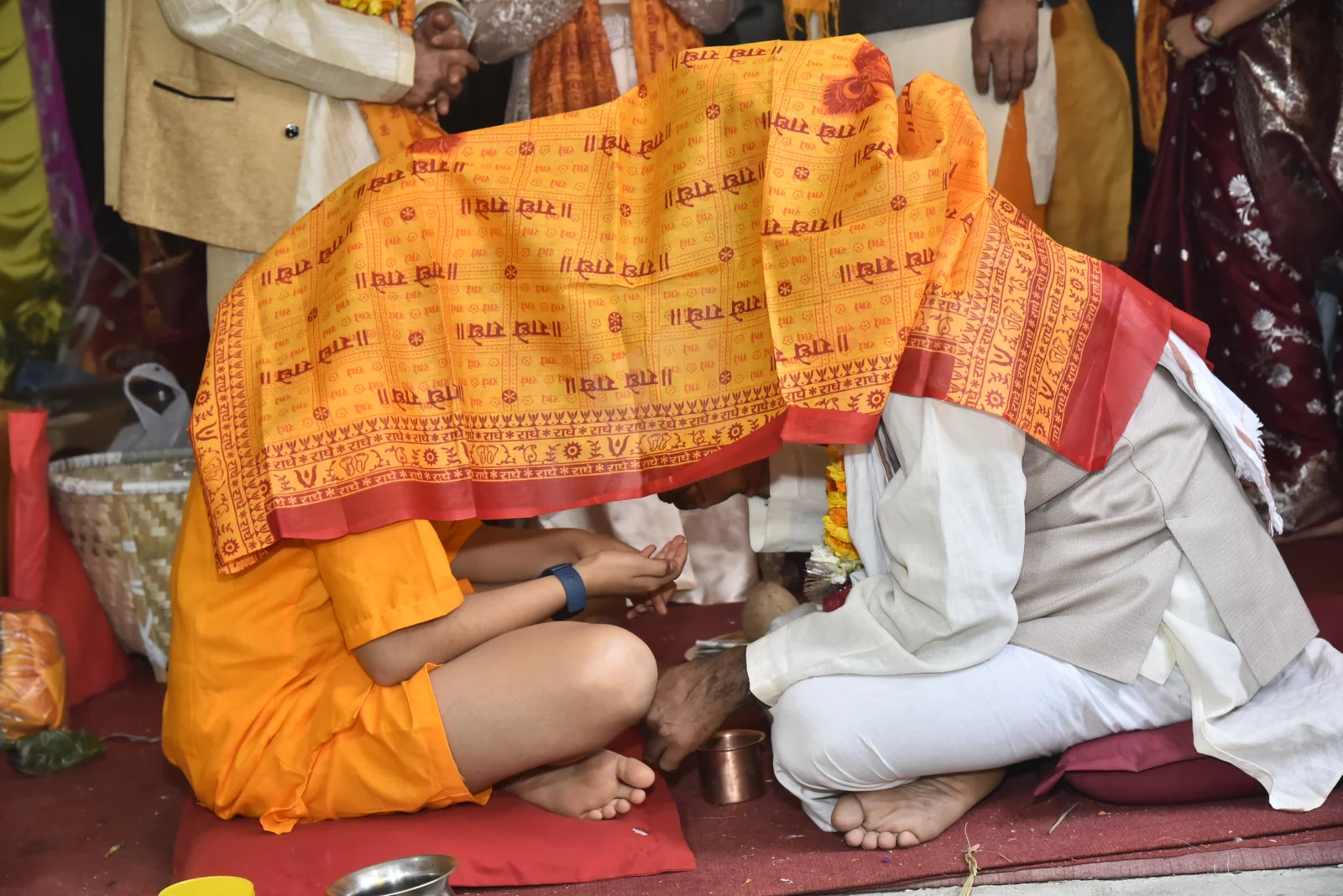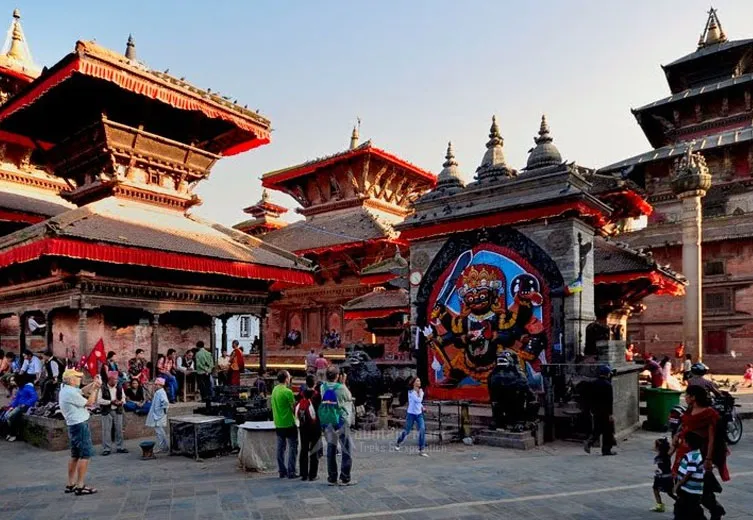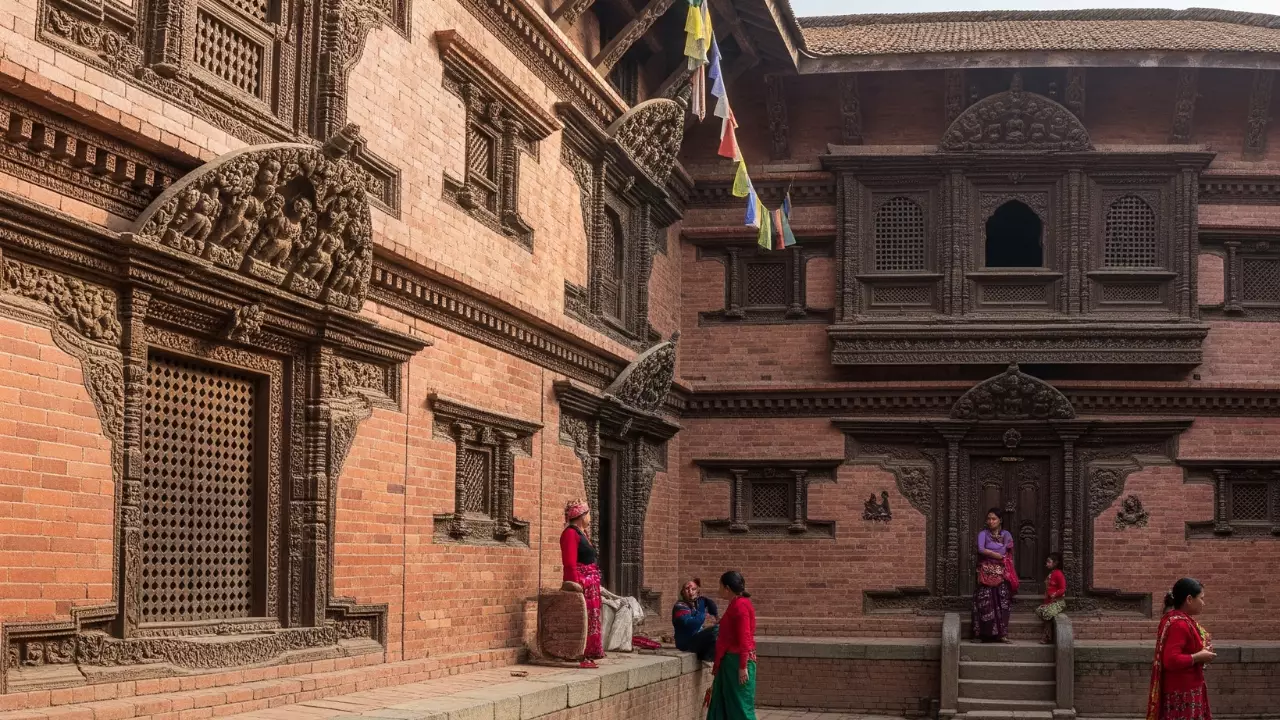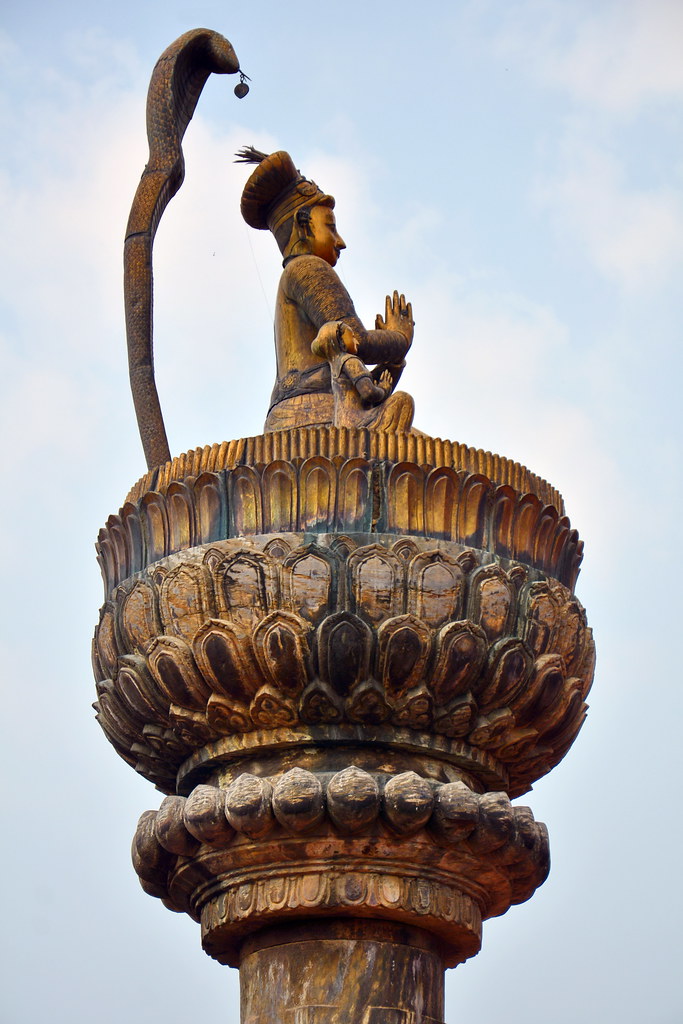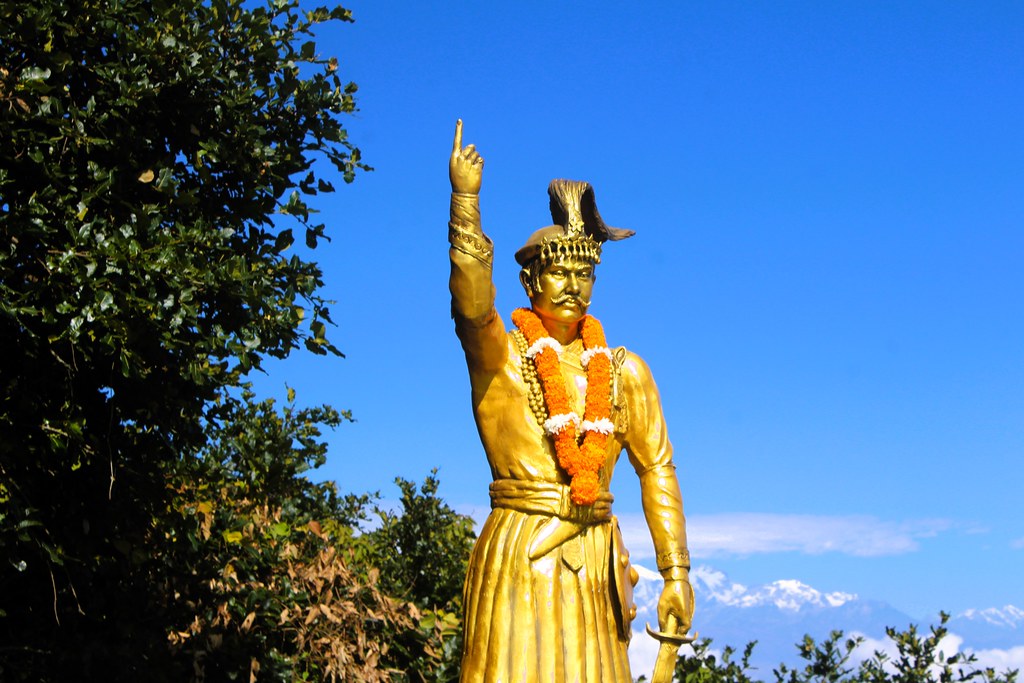Share this Article
Introduction and Mythological Origins
The Kathmandu Valley, cradled in the lap of the Himalayas, is often described as a jewel of South Asia. Its natural beauty, fertile lands, and strategic location made it a hub for trade, culture, and religion for centuries. However, beyond its geographical advantages, the valley owes its rich cultural heritage to the Newar civilization, which has been its principal architect in shaping identity, tradition, and societal structure. The Newars, the indigenous inhabitants of the valley, established a civilization that seamlessly integrates spirituality, art, language, and governance. They transformed the Kathmandu Valley into a living cultural museum, a place where history breathes through festivals, rituals, and monuments.
The origins of the Newar civilization are entwined with myth and legend, offering a fascinating insight into how the people of the valley viewed themselves and their world. One of the most widely cited legends tells of the Kathmandu Valley as a vast lake, referred to as Nagadaha, the lake of serpents. According to the myth, the Bodhisattva Manjushri visited the valley and, seeing its immense potential for human habitation, cut open the Chobar gorge to drain the water. The dried lakebed became fertile soil, inviting settlement. This story is more than mythology; it symbolizes transformation, hope, and human ingenuity, core themes that the Newar civilization embodies.
Archaeological evidence supports early habitation in the valley dating back thousands of years, with signs of organized communities emerging during the Licchavi period (3rd to 9th century CE). The Licchavis laid the foundation for political governance, trade networks, and cultural practices that would evolve into the fully realized Newar civilization. Over centuries, waves of migrants and traders from India, Tibet, and neighboring regions mixed with the indigenous population, enriching the culture with diverse religious, linguistic, and artistic influences.
During the Malla period (12th–18th century CE), the Newar civilization reached its golden age. Kathmandu, Bhaktapur, and Patan emerged as autonomous city-states, each distinguished by monumental architecture, thriving markets, and advanced urban planning. The Malla kings were patrons of art, literature, and religion, commissioning temples, palaces, and sculptures that continue to define the valley’s aesthetic identity today.
The Newars’ resilience and adaptability were key to their longevity. Despite invasions, political upheavals, and modernization pressures, they maintained their distinct identity, preserving their language, customs, and artistic traditions. Their civilization is a testament to the harmonious blending of the sacred and the mundane, where daily life is infused with ritual, spirituality, and cultural symbolism.
The mythological origins of the valley also influenced the spiritual life of the Newars. Temples, stupas, and shrines were constructed in alignment with sacred cosmology, reflecting both Buddhist and Hindu traditions. The valley’s sacred geography is mapped with ritual significance, connecting every river, hill, and temple to stories of divine intervention, spiritual practice, and moral lessons.
Even today, the story of the lake and the draining by Manjushri is not just a legend but a narrative that frames Newar identity. It emphasizes the interconnectedness of human civilization, nature, and the divine. The Newars see themselves as stewards of the land, inheritors of a cultural mandate to maintain harmony, beauty, and social cohesion.
This introductory understanding of the Newar civilization sets the stage for exploring their linguistic heritage, social structure, religious practices, artistic achievements, and the lasting impact they have on the Kathmandu Valley. Each of these facets reflects a civilization that, while ancient, continues to evolve and inspire.
Language and Literature – Nepal Bhasa as the Cultural Spine
Language is more than a tool for communication; it is the heartbeat of a civilization. For the Newars, Nepal Bhasa, also known as Newari, has long been the cultural spine of their identity. It is a language that reflects centuries of intellectual, artistic, and spiritual activity in the Kathmandu Valley. Through literature, poetry, chronicles, and inscriptions, Nepal Bhasa preserves the collective memory and worldview of the Newar people, making it a crucial lens through which their civilization can be understood.
Nepal Bhasa is one of the oldest languages of the Himalayas, with evidence of its usage dating back to the Licchavi period (3rd–9th century CE). During this era, the language was employed in inscriptions, official documents, and religious texts. The Licchavis laid the foundation for a literary tradition that would flourish during the Malla period, when art, education, and religion reached unprecedented heights. Nepal Bhasa served not only as a medium of daily communication but also as a sophisticated tool for poetry, drama, and philosophical discourse.
The literary achievements of the Newars are remarkable for their diversity and depth. Religious texts form a significant part of the literary corpus, reflecting the intertwined nature of Hinduism and Buddhism in the valley. Vajrayana Buddhist scriptures, including tantric texts, rituals, and commentaries, were written and preserved in Nepal Bhasa. Similarly, Hindu texts, chronicles, and devotional literature flourished, often combining local folklore and spiritual narratives.
Prominent Newar poets, such as Siddhidas Mahaju, Chittadhar Hridaya, and Gunakamadeva, elevated Nepal Bhasa literature to its artistic pinnacle. Their works explore themes ranging from divine devotion to social critique, blending lyrical beauty with moral insight. The tradition of storytelling, oral narratives, and epic poetry further reinforced the role of language as a carrier of culture. Through these literary forms, the Newars not only entertained but also educated, guiding communities on ethical, spiritual, and social matters.
Beyond religious and poetic works, Nepal Bhasa was used in administrative and historical texts. Chronicles known as Vamsavalis recorded genealogies, royal achievements, and significant events, providing invaluable insight into the political and social history of the Kathmandu Valley. These documents demonstrate the sophistication of Newar administration, their attention to detail, and their commitment to preserving history for future generations.
Despite its richness, Nepal Bhasa faced periods of suppression, particularly during the Rana regime (1846–1951), when official policies promoted the dominance of Nepali over local languages. However, the resilience of the Newars ensured the survival of their linguistic heritage. Schools, private manuscripts, guthis, and cultural organizations played a pivotal role in safeguarding the language. Even today, Nepal Bhasa remains a vital element of Newar identity, taught in schools, celebrated in festivals, and spoken in homes and neighborhoods across the valley.
The language also reflects the Newars’ openness to external influences. Over centuries, Nepal Bhasa absorbed words from Sanskrit, Tibetan, Hindi, and other languages, enriching its vocabulary and making it a dynamic medium for literary creativity. Its script, known as Ranjana, is an art form in itself, often used in inscriptions, manuscripts, and decorative motifs in temples and stupas. The elegant curves and lines of Ranjana calligraphy embody the aesthetic sensibilities of the Newars, connecting linguistic expression to visual beauty.
Nepal Bhasa is more than a communication tool; it is a living archive of Newar civilization. Through its literature, the Newars have documented their history, celebrated their festivals, preserved their rituals, and expressed their spirituality. The language has been a bridge connecting generations, ensuring that knowledge, values, and traditions flow seamlessly from the past into the present.
In essence, the literary and linguistic achievements of the Newars illustrate the deep intellectual and cultural roots of their civilization. They demonstrate how a language can shape identity, sustain tradition, and foster creativity, making Nepal Bhasa a cornerstone of the Kathmandu Valley’s enduring legacy.
Social Structure and Community Life – The Newar Way of Living
The Newar civilization is remarkable not only for its art, language, and religion but also for its sophisticated social organization. Social structure and community life in the Kathmandu Valley were meticulously designed to ensure harmony, cultural continuity, and collective well-being. The Newars developed a system of social governance that intertwined occupation, ritual, and communal responsibility, creating a resilient society that could sustain traditions for centuries.
At the heart of Newar society lies the intricate caste and occupational system. Unlike the broader Hindu caste system, which primarily emphasizes hierarchy and ritual purity, the Newar system is also deeply functional. It divides society into groups based on occupation, religious duties, and social responsibilities. Each caste or sub-group specializes in specific skills, from agriculture and trade to metalwork, pottery, woodcarving, and sculpture. This division of labor not only maintained economic efficiency but also ensured that cultural and religious traditions were preserved through skilled artisans, priests, and performers.
Farmers (Jyapu) formed the backbone of Newar society. They cultivated rice, vegetables, and other crops, providing sustenance for the valley’s population. Traders and merchants controlled commerce within the valley and beyond, establishing trade routes to Tibet, India, and other regions. Artisans, including metalworkers, woodcarvers, sculptors, and painters, produced the extraordinary works of art and architecture that continue to define the Kathmandu Valley. Musicians and dancers maintained the valley’s rich cultural life, performing during festivals, religious ceremonies, and communal gatherings.
A unique feature of Newar society is the guthi system, a socio-religious organization that governs various aspects of communal life. Guthis are responsible for maintaining temples, conducting rituals, managing festivals, and even overseeing funerary practices. Membership in a guthi is often hereditary, passing from one generation to the next, ensuring that traditions remain intact. Through the guthi system, the Newars achieved a remarkable level of social cohesion, with communal obligations fostering cooperation and solidarity.
The guthi system also functions as a form of local governance. Decisions about community welfare, festival organization, and religious observances are made collectively, reflecting a democratic spirit embedded in traditional society. This system has been crucial in sustaining cultural practices, particularly during periods of political change or social upheaval. Even today, many guthis actively manage temples, maintain ancient monuments, and organize festivals, preserving centuries-old customs.
Family and kinship are central to Newar community life. Extended families often live together in bahals (courtyards) or joint houses, with multiple generations sharing responsibilities and resources. Social interactions are governed by well-defined norms of respect, hierarchy, and mutual assistance. Festivals, rituals, and communal events are not only religious occasions but also opportunities for reinforcing social bonds. Weddings, funerals, and seasonal celebrations all follow elaborate customs that emphasize family honor, community participation, and continuity of tradition.
Education and apprenticeship were historically integrated into the social system. Children learned crafts, music, dance, and religious duties from elders, ensuring that skills and knowledge were transmitted without interruption. This emphasis on apprenticeship contributed to the remarkable artistic, literary, and architectural achievements of the Newars. It also strengthened social cohesion, as each individual understood their role in the larger community.
Religious practices further structured social life. Newars follow a blend of Hinduism and Buddhism, and religious observances are deeply embedded in everyday activities. Ritual purity, offerings, prayers, and festivals guide behavior and reinforce social responsibilities. Temples, stupas, and shrines serve as focal points for communal gatherings, where spiritual, cultural, and social life intersect.
The Newar way of living reflects a profound understanding of balance—between the sacred and the secular, the individual and the community, tradition and innovation. Their society demonstrates that social organization is not merely about hierarchy but about fostering interdependence, preserving culture, and maintaining harmony with the environment.
In essence, the Newar civilization’s social structure and community life illustrate a society that is both organized and adaptable. By linking occupation, religion, and communal responsibility, the Newars created a civilization capable of sustaining its cultural heritage through centuries of change. Their approach to social cohesion, governance, and tradition remains a model for understanding how human communities can thrive while preserving their unique identity.
Religious Pluralism – Harmony of Hinduism and Buddhism
One of the most extraordinary features of the Newar civilization is its religious pluralism. In a world often divided by faith, the Newars of the Kathmandu Valley developed a unique spiritual ecosystem in which Hinduism and Buddhism coexist harmoniously. This religious synthesis is not merely theoretical but is lived daily through rituals, festivals, architecture, and community practices. The Newar approach to religion has fostered tolerance, artistic innovation, and cultural continuity for centuries.
Hinduism and Buddhism in the valley are deeply intertwined. Newar Buddhists follow Vajrayana or Tantric traditions, led by monks and ritual specialists known as vajracharyas. Their practices emphasize meditation, ritual, mantra recitation, and symbolic artistry. Simultaneously, Newar Hindus engage in Shaivism, Vaishnavism, Shakta traditions, and ancestor worship. Unlike many regions where religions operate in isolation, the Newars integrate both faiths into a single cultural framework, reflecting centuries of coexistence and mutual enrichment.
Temples, stupas, and shrines across the Kathmandu Valley demonstrate this synthesis. The Swayambhunath Stupa, one of the oldest Buddhist monuments in the world, is revered by both Buddhists and Hindus. Likewise, the Pashupatinath Temple, a major Shaiva site, attracts Buddhist pilgrims. The living goddess tradition, represented by the Kumari of Kathmandu, is another striking example of religious fusion, where rituals and beliefs draw from both Hindu and Buddhist cosmology.
Rituals and festivals are central to this spiritual coexistence. Indra Jatra, one of the most famous festivals of Kathmandu, celebrates both the Hindu deity Indra and the living goddess Kumari, combining masked dances, chariot processions, and communal celebrations. Similarly, Gunla, a Buddhist festival, sees entire communities participating in prayers, musical processions, and offerings, reinforcing shared cultural identity rather than sectarian division.
The Newar civilization’s religious pluralism also extends to daily life. Homes are often equipped with small shrines dedicated to both Hindu and Buddhist deities, and religious observances mark routine activities, from childbirth and marriage to death rituals. Each neighborhood, or tole, has its own temple or shrine, maintained collectively by guthis, ensuring that spiritual life remains embedded in the community fabric.
This harmonious blending of religions has inspired Newar art and architecture. Temples are decorated with sculptures that depict both Hindu and Buddhist motifs. Ritual paintings, such as paubhas, often feature deities from both traditions, illustrating mythologies side by side. Religious iconography in Newar culture is a testament to creativity born from coexistence rather than conflict.
Religious pluralism has also reinforced social cohesion. Shared rituals and festivals allow diverse caste and occupational groups to participate together, strengthening communal bonds. The guthi system, which manages temples, festivals, and ritual responsibilities, further ensures that religious practices are inclusive and organized. This framework has enabled Newar civilization to endure through political upheavals, foreign invasions, and societal changes.
Education and apprenticeship in religious arts have reinforced this pluralism. Young Newars learn rituals, music, dance, and art under the guidance of elders who are proficient in both Hindu and Buddhist traditions. This ensures that knowledge and devotion are transmitted seamlessly across generations, maintaining continuity and harmony.
In essence, the Newar civilization demonstrates that religious pluralism is not just tolerance but a dynamic synthesis that enriches culture. By integrating Hinduism and Buddhism into a coherent social and spiritual framework, the Newars created a civilization in which faith and daily life are inseparable, festivals are communal expressions, and art and architecture reflect spiritual depth.
This harmonious spiritual landscape has not only defined the cultural identity of the Kathmandu Valley but has also served as a model for coexistence. It illustrates how religion, when embraced inclusively, can unify rather than divide, providing a foundation for artistic, social, and intellectual achievements.
Festivals and Rituals – Celebrating Life in Color and Devotion
The Newar civilization is renowned for its vibrant festivals and intricate rituals, which are far more than mere celebrations; they are the lifeblood of the community. Festivals serve as a living expression of spiritual devotion, artistic creativity, and social cohesion, linking generations and reinforcing the cultural identity of the Kathmandu Valley. For the Newars, festivals are opportunities to honor the divine, celebrate human life, and strengthen communal bonds, transforming the ordinary rhythm of daily life into a continuous festival of culture and devotion.
One of the most iconic festivals is Indra Jatra, celebrated primarily in Kathmandu. This festival honors Lord Indra, the king of heaven and rain, and simultaneously venerates the living goddess Kumari. The celebrations feature chariot processions, sacred masked dances, and traditional music performed by various neighborhood groups. Indra Jatra is a powerful example of how religious pluralism, communal participation, and artistic expression converge in Newar society. The festival’s elaborate rituals and performances not only honor the deities but also reaffirm social bonds, as neighbors collaborate to organize the processions and ceremonies.
Another significant festival is Bisket Jatra, primarily celebrated in Bhaktapur. This festival marks the Nepali New Year and involves the dramatic pulling of massive chariots through narrow city streets, symbolizing the triumph of good over evil and the renewal of life. The festival’s energy is matched by its social significance, as it brings together different caste groups and neighborhoods in a shared cultural endeavor, strengthening community identity and continuity.
Gai Jatra, the festival of cows, is uniquely Newar in character. It is celebrated to commemorate those who have passed away during the year, blending grief, humor, and communal remembrance. Families organize processions where participants dress in elaborate costumes, perform satirical dances, and honor their deceased relatives. Gai Jatra demonstrates the Newars’ distinctive ability to integrate spirituality, social commentary, and human emotion into communal life, showing that even sorrow can be transformed into a shared celebration of life and memory.
Buddhist festivals such as Gunla, observed in Kathmandu and Patan, highlight the Newars’ devotion to Vajrayana traditions. During Gunla, devotees visit stupas, perform musical processions, and offer prayers, combining religious observance with social gathering. Similarly, Samyak, a grand alms-giving festival in Bhaktapur and Kathmandu, celebrates Buddhist deities and emphasizes generosity, community service, and the redistribution of wealth, reflecting the ethical foundations of Newar spirituality.
Hindu festivals like Dashain and Tihar also hold deep significance among the Newars, even as they blend local customs with broader national traditions. During Dashain, families perform rituals to honor goddess Durga, while Tihar celebrates the bonds between humans, animals, and the divine through elaborate offerings, lights, and music. These festivals are enriched with unique Newar customs, such as special foods, dances, and artistic displays, demonstrating the integration of universal religious observances with local culture.
The scale and frequency of festivals in Newar society create a continuous rhythm of communal engagement. Almost every month of the lunar calendar includes at least one major festival or ritual, ensuring that cultural practices are regularly renewed and transmitted to younger generations. Children learn through participation, observing elders performing rituals, playing traditional instruments, and enacting mythological stories, embedding cultural literacy from an early age.
Rituals during festivals are highly codified yet flexible enough to accommodate community participation and creativity. Music, dance, and performance are integral components, transforming sacred observances into multisensory experiences. Masks, costumes, and elaborate decorations are meticulously crafted by skilled artisans, reflecting both devotion and aesthetic sensibility. The visual and auditory spectacle of Newar festivals transforms urban spaces into living theaters, where spirituality and community intersect.
Food plays a central role in these celebrations. Special dishes like yomari, chatamari, and bara are prepared in large quantities, not only for consumption but also as offerings to deities. Sharing food strengthens social bonds, reinforces reciprocity, and symbolizes abundance and gratitude. Feasts are carefully organized to reflect both social hierarchy and inclusivity, ensuring that communal participation is broad and harmonious.
In essence, festivals and rituals are the heartbeat of Newar civilization. They sustain spiritual devotion, promote social cohesion, and preserve artistic and culinary traditions. Through these celebrations, the Newars express the full spectrum of human experience—joy, sorrow, devotion, creativity, and communal solidarity—ensuring that their cultural heritage is not only remembered but actively lived every day.
The vibrant tapestry of festivals in the Kathmandu Valley is a testament to the Newars’ ability to integrate spirituality, art, and community life. Each festival is a living bridge between past and present, linking generations while reinforcing the timeless legacy of the Newar civilization.
Architecture and Urban Planning – Crafting Cities of Timeless Beauty
The Kathmandu Valley’s enduring charm and cultural richness owe much to the Newar civilization’s mastery of architecture and urban planning. Their cities are not mere settlements; they are meticulously designed cultural landscapes, where art, spirituality, and daily life converge. The Newars transformed Kathmandu, Bhaktapur, and Patan into living museums, creating urban spaces that harmonize human habitation with religious devotion, aesthetic sophistication, and community interaction.
Newar architecture is instantly recognizable for its elegant blend of brick, wood, and stone, adorned with intricate carvings, statues, and symbolic motifs. Temples, stupas, palaces, and courtyards showcase the civilization’s artistic and engineering prowess. The pagoda style, perfected by Newar architects, features multi-tiered roofs, elaborately carved wooden struts, and tiered platforms, balancing structural functionality with spiritual symbolism. This architectural style later influenced regions as far as Tibet, China, and Southeast Asia, spreading the Newar aesthetic across Asia.
The Durbar Squares of Kathmandu, Bhaktapur, and Patan are perhaps the most striking examples of Newar urban and architectural genius. These central squares are surrounded by palaces, temples, and residential complexes, forming cohesive ensembles that integrate civic, religious, and social functions. Each square reflects the values and priorities of Newar society: devotion to deities, celebration of kingship, and the importance of community gatherings. The courtyards, or chowks, serve as communal spaces where festivals, rituals, and social interactions unfold, reinforcing the social fabric of the city.
Urban planning in Newar cities was guided by both practical and spiritual considerations. Streets, lanes, and alleys (galli) were carefully organized to facilitate commerce, community interaction, and religious processions. Residential clusters were arranged around courtyards or bahals, where families and neighborhood communities could live, worship, and socialize collectively. Water management systems, including wells, ponds, and canals, were designed to support agricultural and domestic needs, reflecting the Newars’ sophisticated understanding of engineering and sustainability.
Temples and religious monuments are strategically placed to align with sacred geography. Stupas, shrines, and monasteries are often located at high points, riverbanks, or along important streets, connecting urban life with cosmology and spiritual practice. Symbolism permeates Newar architecture; carvings on doors, windows, and struts depict deities, mythological stories, protective spirits, and moral lessons, serving both decorative and instructive purposes. Every structure conveys meaning, integrating art, spirituality, and functionality.
The residential architecture of the Newars is equally remarkable. Multi-story houses with elaborately carved windows, balconies, and doors are not only aesthetically beautiful but also engineered for practical living. Thick brick walls provide insulation, while inner courtyards allow light and ventilation. The placement of shrines within homes reflects the integration of spiritual life into everyday activities, making the domestic space both functional and sacred.
Bridges, gates, and public infrastructure further exemplify the Newars’ planning expertise. Stone-paved streets, ornate gateways, and public wells were designed to accommodate civic needs, facilitate commerce, and support religious processions. Urban spaces were multifunctional, blending markets, temples, courtyards, and public gathering areas, demonstrating an understanding of city planning that balanced social, spiritual, and economic priorities.
The Newars also excelled in decorative arts integrated into architecture. Woodcarvings on struts, windows, and doors display intricate floral patterns, mythological figures, and symbolic motifs. Stone sculptures of deities and guardians embellish temples and courtyards, reflecting both artistic skill and religious devotion. Metalwork, particularly in temple bells, statues, and ritual implements, further enhances the aesthetic and spiritual ambiance of the urban landscape.
The durability of Newar architecture is a testament to their engineering skill. Despite centuries of earthquakes, invasions, and environmental challenges, many temples, palaces, and monuments have survived, often restored by skilled artisans using traditional techniques. This resilience reflects the Newars’ understanding of materials, structural integrity, and urban sustainability.
In essence, Newar architecture and urban planning are not simply about buildings; they are expressions of a civilization’s philosophy, values, and identity. They demonstrate how a society can integrate beauty, functionality, spirituality, and community in the design of its living spaces. The Kathmandu Valley, with its harmonious blend of temples, palaces, courtyards, and streets, stands as a living testament to the Newars’ ability to craft cities of timeless beauty.
Through their architectural legacy, the Newars have left an enduring imprint on the cultural and physical landscape of Nepal, providing a foundation upon which future generations continue to celebrate, preserve, and innovate.
Art and Craftsmanship – The Soul of Newar Creativity
Art is at the very heart of the Newar civilization. Their culture is visually and spiritually rich, and the valley itself is a canvas showcasing centuries of Newar creativity. From intricate woodcarvings to mesmerizing paubha paintings, metal sculptures, and architectural embellishments, the Newars’ artistic legacy has both preserved their spiritual traditions and shaped the aesthetic identity of the Kathmandu Valley.
One of the most iconic forms of Newar art is the paubha painting, a traditional form of religious art closely associated with Vajrayana Buddhism. Paubhas are meticulously crafted scrolls depicting deities, mandalas, and religious narratives. They serve not only as objects of devotion but also as educational tools, teaching stories of karma, dharma, and the lives of Buddha and other spiritual figures. The precision, symmetry, and vibrant colors of paubhas reflect both spiritual symbolism and the extraordinary technical skill of Newar artists. These paintings have influenced Tibetan thangka art, spreading Newar aesthetic principles beyond Nepal.
Woodcarving is another domain where the Newars have demonstrated unparalleled mastery. Elaborate wooden struts, windows, doors, and temple façades are adorned with carvings of gods, goddesses, mythical creatures, and floral motifs. Each carving is both decorative and symbolic, often telling stories from Hindu and Buddhist mythology. The Lakhe and Garuda struts, for instance, are famous for their intricate details and dynamic forms, reflecting both artistic brilliance and religious devotion. The craftsmanship involved requires years of apprenticeship, ensuring that techniques and styles are passed down through generations.
Metalwork is equally sophisticated, with Newar artisans producing bronze, copper, and gilt sculptures for temples, monasteries, and private worship. Statues of Buddha, Tara, Avalokiteshvara, and various Hindu deities are characterized by precise proportions, graceful postures, and symbolic hand gestures (mudras). Ritual implements such as bells, vajras, and ceremonial vessels are not only functional but also adorned with intricate designs, blending utility with sacred artistry.
Stone carving, too, holds a special place in Newar craftsmanship. Stone sculptures of guardians, deities, and mythical animals decorate temples, gateways, and stupas. Each carving follows strict iconographic guidelines, ensuring that spiritual meaning is embedded in artistic expression. The combination of stone, wood, and metal across temples and palaces demonstrates the Newars’ ability to harmonize multiple materials into cohesive aesthetic and spiritual compositions.
Newar artisans also excelled in everyday decorative arts. Items such as jewelry, ritual utensils, musical instruments, and household objects were often intricately crafted, combining functionality with aesthetic appeal. This attention to detail in daily life reflects a worldview where beauty, devotion, and utility coexist seamlessly. Even mundane objects were imbued with cultural significance, showing that art in Newar civilization was not limited to elite spaces but was integrated into everyday existence.
Festivals and rituals further stimulated artistic production. Elaborate masks, costumes, ceremonial chariots, and decorative paraphernalia were created by skilled artisans, blending religious symbolism with visual storytelling. The masks of the Lakhe dance, for example, are carved and painted to convey specific mythological characters and emotions, transforming performers into embodiments of divine or demonic forces. Similarly, the chariots used in Indra Jatra and Bisket Jatra are adorned with carvings, paintings, and metal embellishments, turning functional vehicles into monumental works of art.
The Newars’ artistic legacy is inseparable from their spiritual and social life. Art serves as a medium for religious devotion, social instruction, and cultural preservation. It is embedded in the very fabric of daily life, from temple façades to household utensils, ensuring that creativity and culture are constantly lived rather than merely observed.
In addition to aesthetic value, Newar art demonstrates a remarkable technical sophistication. The combination of proportion, symmetry, iconography, and material knowledge shows that the Newars were not only creative but also highly skilled engineers and designers. Their ability to maintain stylistic consistency over centuries while innovating within traditions highlights the civilization’s artistic resilience and adaptability.
In essence, the Newars’ artistic achievements are a reflection of their broader cultural philosophy: an integrated approach to life where art, religion, and social structure are interdependent. Their creativity has left a permanent imprint on the Kathmandu Valley, making it a living gallery of spiritual and artistic excellence. The paintings, carvings, sculptures, and everyday objects of the Newars continue to inspire admiration, study, and reverence, ensuring that their legacy transcends time.
Conclusion: The Timeless Legacy of the Newar Civilization
The Newar civilization of the Kathmandu Valley represents one of the most remarkable examples of cultural continuity, creativity, and resilience in human history. From its mythological origins to its sophisticated social structures, from its linguistic and literary achievements to its unparalleled artistic and architectural contributions, the Newars have shaped the valley into a living repository of heritage and tradition. Their civilization is not confined to the past; it continues to thrive in daily life, festivals, rituals, language, and art, demonstrating an extraordinary capacity to adapt while preserving identity.
Central to the Newars’ enduring legacy is their ability to integrate the sacred and the secular, the artistic and the functional, and Hinduism and Buddhism into a harmonious cultural framework. Their social system, guided by community organizations like guthis, ensures cohesion, continuity, and shared responsibility, while their festivals, rituals, and performances strengthen spiritual devotion and communal bonds. Through architecture, sculpture, painting, and craft, the Newars have created spaces that are both aesthetically magnificent and spiritually resonant, blending urban planning with cosmology and symbolism.
The Kathmandu Valley stands today as a living testament to Newar ingenuity, illustrating how a civilization can leave an indelible mark on its environment, society, and culture. Even in the face of political changes, modernization, and external influences, the Newars have preserved their language, customs, and traditions, ensuring that their cultural identity remains vibrant and relevant. Their contributions have not only shaped Nepal’s heritage but have also influenced art, architecture, and religious practices across the Himalayan region and beyond.
Ultimately, the Newar civilization exemplifies the power of human creativity, resilience, and devotion. It teaches us that culture is not merely inherited; it is actively lived, celebrated, and transmitted across generations. The timeless legacy of the Newars continues to inspire scholars, artists, pilgrims, and residents alike, reminding the world that the Kathmandu Valley is not just a place of geography, but a cradle of civilization, spirituality, and artistic excellence. Through their enduring presence, the Newars have left a gift to humanity: a civilization where life, art, and devotion coexist in perfect harmony, shaping the heart and soul of a region for centuries to come.
Categories:
History & Heritage
Tags:
tradition
,
Newar


